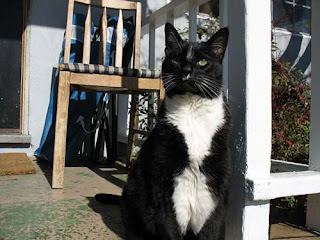
The beginning of June, 2009, I left Aguascalientes for Venice Beach, California, returning home after nearly three years in Mexico. Between my last journal entry and today's, I had many wonderful experiences that I plan to share in this blog. Anyone who has the opportunity to visit the central region of Mexico, is in for a treat.
Central Mexico is often referred to as the Colonial Heartland. It represents Mexico's 16th Century development by the conquistadors (Spanish), their discovery of silver and gold, which led to mining and great wealth. The cities that arose were adorned with fanciful architecture in colorful cantera rosa stone, cobblestone streets and plazas for markets and gatherings surrounded by towering church steeples and well-manicured gardens.
My town, Aguascalientes, was part of the state of Zacatecas. By 1610, the small town of Aguascalientes had approximately 25 Spanish residents, about fifty families of mestizos, at least 100 mulatos, twenty Black slaves, and ten Indians. Most of these twenty-five Spanish inhabitants are believed to have been among the founding families of Aguascalientes, bearing the surnames Ruiz de Esparza, Alvarado, Tiscareno de Molina, Luebana, and Delgado.
With the end of the Mexican Revolution, Aguascalientes became an independent political entity on June 22, 1821. However, soon after, in 1824, the small territory was incorporated as part of the State of Zacatecas and for the next 14 years it remained attached to its northern neighbor. On May 23, 1835, the Mexican Congress declared the formation of the Territory of Aguascalientes, separating the territory from Zacatecas and setting in motion a process that would eventually lead to statehood. The loss of Aguascalientes and its rich agricultural terrain would be a severe blow to the economy and the spirit of Zacatecas.
However, many citizens of Aguascalientes are proud to point out a more romantic version of the events leading to autonomy and independence from Zacatecas. According to Tony Burton in his book, Western Mexico: A Traveler's Treasury, "The independence of Aguascalientes was sealed with a kiss, as the locals are invariably quick to point out." As he was engaged in his campaign against the rebellious Zacatecas government, General Santa Anna met one Doña María Luisa Villa. Legend has it that Santa Anna became captivated by this attractive woman and asked her for a kiss, promising her anything she wanted in return. Her request was that her native land be given autonomy. Santa Anna fulfilled this request, granting Aguascalientes the status of territory. María Luisa's husband, Pedro García Rojas, was appointed as the first Gobernador (Governor) of the Territory of Aguascalientes, serving until June 1836.
Today, Aguascalientes - located near the geographic center of Mexico - remains an important part of the Mexican economy. The state has highway and rail communications networks that link Aguascalientes to many of Mexico's major cities. This easy access to markets across the country has played a major role in stimulating the economy of Aguascalientes. Aguascalientes is also recognized as an important cultural center in Mexico. La Feria de San Marcos, celebrated in late April and early May of each year, is famous throughout the nation. The festival lasts for 22 days and features a wide array of cultural and popular events that draws up to a million tourists annually.
